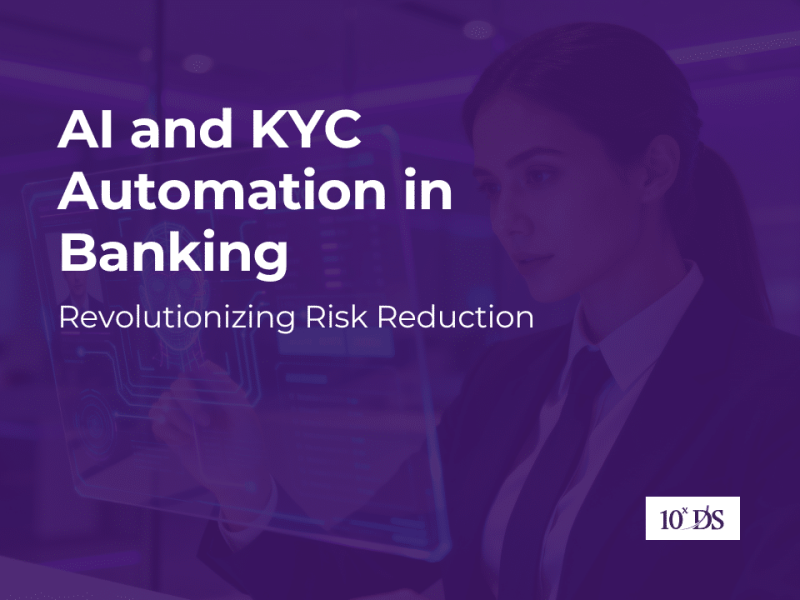
The Game-Changing Impact of Automating Insurance Policy Management
Automation is transforming the insurance industry by reengineering core functions—from underwriting and policy administration to claims processing and compliance. Through advanced technologies, insurers are not only reducing administrative loads but also significantly boosting client satisfaction and operational efficiency. This strategic shift provides a powerful edge in today’s competitive market, offering users a seamless, efficient, and transparent insurance experience. Automation drives faster policy approvals, sharpens fraud detection, and facilitates self-service and tailored plans, meeting the high digital expectations of modern policyholders. Insurers adopting automation can:
- Elevate service quality and customer satisfaction
- Ensure swift, streamlined compliance while minimizing regulatory risks
- Cut costs associated with labor-heavy processes
- Build lasting customer loyalty with quick, reliable service
- Nimbly adapt to evolving digital and mobile expectations
Challenges in Traditional Insurance Management
Traditional insurance management struggles with inefficiency, errors, and high labor costs due to reliance on manual processes. Routine tasks like data entry and claims documentation account for 30-40% of labor costs, while delays in processing lead to customer dissatisfaction. With 70% of clients expecting digital interactions, these challenges risk driving clients away and damaging loyalty, emphasizing the need for automation to improve operational efficiency and customer satisfaction.
Real time Use Cases of Automation in Insurance Sector
Automation is transforming insurance with various impactful use cases. Lemonade, an AI driven insurance provider, boosts efficiency by processing a substantial portion of claims in under few minutes, reducing labour costs and improving customer satisfaction. Progressive Insurance, a leading auto insurer, enhances customer experience by providing real-time claims updates via AI, promoting higher retention. Allianz, a global financial services company, centralizes data with RPA and analytics, streamlining decision-making and reducing compliance costs by almost half. Similarly, AXA, a multinational insurance firm is reported to save $200 million annually through automating policy renewals and claims adjudication, cutting processing costs by 30%. These examples demonstrate automation’s role in improving efficiency, customer satisfaction, and cost savings across the industry.
Key Automation Trends in Insurance Policy Management and Their Impact on Users
As technology transforms insurance, specific trends like AI-driven underwriting, real-time fraud detection, and self-service options are changing how insurance operates both for insurers and customers. Here’s a detailed breakdown of how these advancements are implemented, the technology driving them, and the benefits they provide at the user level.
1. AI-Driven Underwriting:
AI and machine learning (ML) models are trained on vast datasets to predict customer risk profiles with greater precision than traditional underwriting methods. By analyzing both structured data, such as customer demographics, and unstructured data, like medical records and driving history, AI can generate accurate risk assessments almost instantly. Insurers use ML algorithms and predictive analytics to evaluate factors affecting risk, including health, lifestyle, and credit scores. This AI-driven approach enables faster policy approvals, personalized premiums based on accurate risk assessments, and enhanced transparency, providing clearer explanations for premium adjustments or declines. Companies like Zurich Insurance have adopted these models to streamline underwriting, reduce turnaround times, and improve accuracy.
2. Real-Time Fraud Detection:
Fraud detection models powered by AI analyse patterns in claims to flag potentially fraudulent activities. These systems use anomaly detection to compare new claims with historical data, identifying irregularities that may signal fraud. Machine learning algorithms, combined with data analytics, scan large datasets to detect patterns associated with fraudulent behavior. For instance, State Farm uses these tools in their claims processing to flag inconsistencies indicating fraud. This real-time fraud detection reduces premium costs by minimizing fraudulent claims, speeds up the processing of legitimate claims, and builds trust with customers by ensuring their claims are handled fairly and without unnecessary delays.
3. Self-Service Portals for Policyholders:
Self-service portals, accessible via mobile apps or websites, enable policyholders to perform routine tasks like managing policies, requesting updates, filing claims, and viewing policy details without the need for a representative. APIs and cloud-based systems integrate policy data across digital platforms, while user-friendly designs and chatbots enhance the digital experience. For example, GEICO offers a comprehensive app where users can adjust coverage, make payments, and even receive roadside assistance. These portals provide users with control and convenience to manage their insurance anytime, lead to faster resolutions for policy changes or claims, and encourage greater engagement, helping them stay informed and make better coverage decisions.
4. Integration with Ecosystem Partners:
Insurers partner with third-party services, such as health apps, fitness trackers, and telematics devices, to collect additional data on policyholders for personalizing coverage or offering benefits. For example, John Hancock’s Vitality program integrates health tracking data to provide premium discounts based on physical activity. APIs enable the secure sharing of data between insurers and ecosystem partners, while IoT devices and wearables provide real-time health and activity data. This integration allows insurers to offer customized premiums and rewards for users with healthy lifestyles, enhance wellness through programs like Vitality, and provide proactive coverage options based on real-time data that reflects users’ lifestyles and risk levels.
5. Use of Robotic Process Automation (RPA) for Compliance and Reporting:
RPA automates repetitive, rule-based tasks like data validation, reporting, and compliance checks. RPA bots process large volumes of data to ensure adherence to regulatory requirements and reporting accuracy. RPA uses bots with specific rules to handle structured data, update records, generate compliance reports, and validate data for accuracy. For users, RPA improves accuracy and security by reducing human errors, enables faster issue resolution with quicker responses for account updates, policy renewals, and claim decisions, and ensures compliance with regulatory standards, building trust through reliable data security and ethical handling of information.
Smart businesses and organizations opt for automation in insurance policy management because it allows them to operate with agility, accuracy, and customer-centricity. By automating repetitive tasks and improving data-driven decision-making, they can offer faster, more personalized service, which enhances customer satisfaction and retention. This technological edge not only reduces costs but also ensures compliance, making operations both efficient and secure. Companies that embrace automation go far beyond their competitors—they can quickly adapt to industry trends, provide superior customer experiences, and maintain a flexible, scalable infrastructure that keeps them ahead in a rapidly evolving market. With 90% of insurers planning to increase AI investments by 2024, automation is a crucial investment for insurers seeking to future-proof their operations, reduce costs, and offer superior customer experiences.Talk to our experts to learn more.


